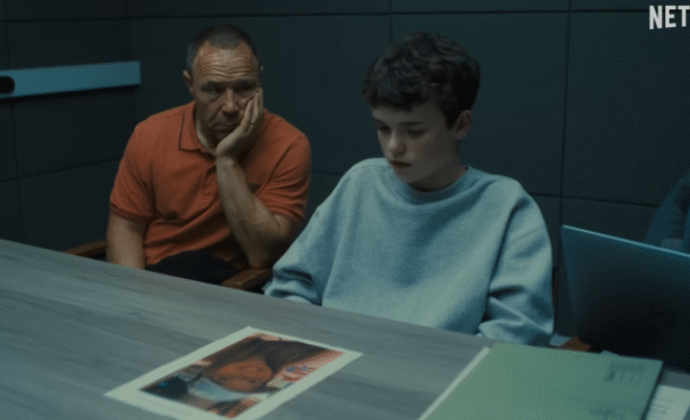What the Netflix Hit ‘Adolescence’ Gets Wrong About ‘Toxic Masculinity’
And what it gets right about toxic techno-addictions.

|
Getting your Trinity Audio player ready...
|
[Want even more content from FPM? Sign up for FPM+ to unlock exclusive series, virtual town-halls with our authors, and more—now for just $3.99/month. Click here to sign up.]
If you keep up with the intersection of politics and pop culture like I do, you can’t have missed hearing about a recent British drama that was the most-watched show on Netflix worldwide, and that has become a surprising flashpoint of controversy. Podcasters, politicians, and pundits from National Public Radio to the Daily Wire have weighed in on the show’s controversial messaging about a deeply concerning issue for today’s youth: the toxic nature of social media among a demographic that is addicted to cell phones.
The four-episode series Adolescence follows the Millers – a British, white working class family whose lives are torn apart when their 13-year-old, socially isolated son Jamie is arrested for the stabbing murder of a female classmate – purportedly after being influenced by online misogyny. Each episode, shot in one continuous take, shifts perspective: from the initial arrest and family shock, to a police investigation uncovering Jamie’s exposure to “toxic masculinity” online, to a psychological evaluation exposing his internalization of misogynistic hostility, and finally to the painful confusion of parents questioning their own responsibility for Jamie’s crime.
This is not a plot-driven whodunit. It’s deeply character-driven and explores the crime’s impact on Jamie’s family and friends, as well as the societal and psychological forces that drove the boy to commit such a shocking act. But the series’ 66 million views in its first two weeks and universal critical acclaim (earning a 99% score on the movie ratings site Rotten Tomatoes) are a testament to its riveting appeal and cultural impact.
The show’s co-creators, Jack Thorne and actor Stephen Graham – who gives an astonishing performance as the boy’s tortured father – have said they wanted Adolescence to be a show that “causes discussion and makes change.” Mission accomplished. British Prime Minister Keir Starmer himself revealed that he watched the show with his two teenagers and supports calls for Adolescence to be shown in schools and even in Parliament.
Part of the controversy surrounding the show stems from the fact that it deals with knife crime in the UK, where offenses have surged by 80% over the past decade. Critics have blasted the show for casting a white protagonist, whitewashing high-profile instances of knife crimes in the UK that involved non-white migrants (the show’s creators have denied any “race-switching”). But the show’s core theme is the destructive impact of youth addiction to cell phones, social media “likes,” and toxic online influencers.
Central to Adolescence is the influence of the so-called “manosphere,” an online realm where mostly young men congregate to share strategies about relationships, fitness, and finances. Much of this is useful and desperately needed in a world in which far too many boys and young men lack Old School father figures as role models for masculine skills and wisdom. But the worst excesses of the manosphere are epitomized by figures like Andrew Tate, a former kickboxer turned exploitative influencer who flaunts a flashy lifestyle of wealth and womanizing that is seductive for lonely teenage boys like Jamie. (I’ve written before about Tate, perhaps most extensively here.) Tate is explicitly name-checked in the series when a detective references him as a sort of shorthand for the toxic ideologies Jamie encounters.
Former England football manager Gareth Southgate slammed “callous, manipulative” influencers like Tate in a recent televised lecture. He said, “They willingly trick young men into believing that success is measured by money or dominance, that strength means never showing emotion, and that the world, including women, is against them.”
But there is no evidence linking knife crimes to the influence of the manosphere, and “toxic masculinity” is a misleading label that has tragically become a household expression, and that is almost always politically weaponized against boys and men. (I’ve written and spoken many times about this label, which suggests — and this is the subversive intention — that masculinity itself is poisonous.) Nicole Russell, a USA TODAY columnist and mother of boys, argues for example that the series “demonizes boys” by suggesting their descent into violence is inevitable.
The really valuable social issue captured by Adolescence, I would argue, is the omnipresence of cell phones in teenage life, which are portrayed as both lifeline and Pandora’s box. The series illustrates how this addiction combines with social media platforms to devastating effect, amplifying adolescent insecurities, with “likes” and online validation becoming a currency of self-worth. For Jamie, rejection by his eventual victim—who mocks him online with “incel” emojis—triggers a spiral of humiliation and rage. This cyberbullying, facilitated by the ubiquity of Instagram and other social media platforms, exacerbates his feelings of inadequacy, pushing him toward online spaces that offer toxic answers to his loneliness.
Jamie’s obsession with social media mirrors real-world concerns about screen addiction. Studies indicate that nearly 40% of UK children his age were found to be on their phones for four hours or more each day; 65% were on them for two hours or more. This is in addition to time on other screens such as television, computers, and tablets (American teens are reportedly even more deeply immersed in the virtual world). Adolescence depicts this addiction as a feedback loop: the more isolated Jamie felt, the more he sought affirmation online, which simply agitated his distress.
Experts on technology and child psychology have been warning about the various physiological, psychological, and emotional perils young people face from internet and screen addiction for many years. But apparently these Cassandras were simply shouting into the wind, because screen use and social media interaction have skyrocketed.
If we are going to rescue our young people from this self-destructive enslavement and prevent future generations from hearing that Siren call, we need to treat this as not just a societal concern but a civilizational emergency. The counter-movement must begin with parents themselves, who are the front line defenders of their children in every respect; among other measures, they must set strict limits and exert vigilant control over cell phone access and screen time – starting with denying smartphones to children under a certain age (let’s say 16). Schools must prioritize children by minimizing computer use and banning cell phone use in classrooms. And social media platforms themselves must be willing – or if necessary, compelled by concerned, organized parents or even government intervention – to raise the age limits of users (currently, the vast majority have set a minimum age of 13 in the U.S.).
These are just a few suggestions for reclaiming our cultural health and sanity by getting our technological demons under control. We cannot afford to let the shallow, illusory, damaging seductions of the virtual world be more meaningful and captivating to our young people than the real one.
Follow Mark Tapson at Culture Warrior
This article first appeared in a slightly different version at 1819 News and Intellectual Takeout. Reprinted with permission of The Fred & Rheta Skelton Center for Cultural Renewal.

